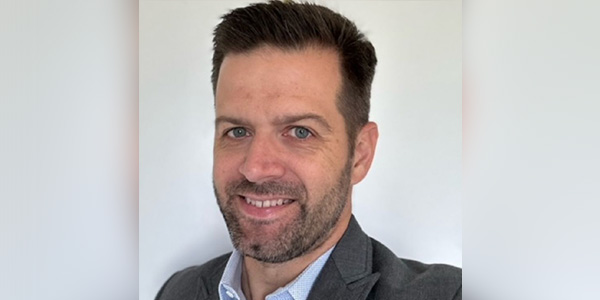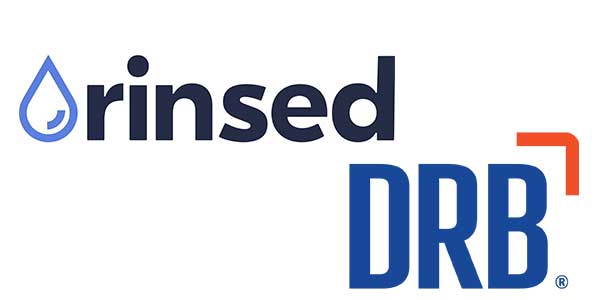More operators are operating more washes these days. As an owner or a management team operating multiple locations, there are some unique challenges involved with building a brand and protecting its reputation. However, as more carwashes are aggressively growing their location numbers — as supported by our annual Top 50 List of U.S. Conveyor Carwash Chains, which was published most recently in our November 2019 issue — the need to strategize, hire properly, proactively monitor key performance indicators (KPIs) and improve your managerial skills are becoming imperative in this industry.
No time to read this article? Listen to it instead!
What are the industry tools needed and the best practices involved with operating multiple sites? We spoke with some industry insiders who have experience in this area for their thoughts.
Multi-site benefits
Outside of elevated revenue and a larger customer base, there are many benefits to operating multiple carwash locations. And, similar to many other industries, a strong, respected brand that is operated at a high standard can breed trust and loyalty from customers. Customers like receiving a consistent service and experience, and they are likely willing to pay more and award loyalty for it.
Owning multiple locations in a region also offers flexibility for the operator and conveniences for the customer, states Carl Howard, chief operating officer of Autobell Car Wash. For example, if one wash is shut down for maintenance or an issue, such as local roadway construction, the customer has options to get service at another location. So, from an operational perspective, adds Howard, having multiple locations actually reduces risk.
The power and potential of loyalty programs at a wash has been well documented in this publication. Leveraging strength in numbers, carwashes that offer unlimited or loyalty programs can enable the program so that customers can wash at several or all branded locations.
According to Todd Davy, senior vice president of sales with DRB Systems, operating multiple locations in the same city can actually help to grow your chain’s monthly subscription business. If customers can be assured that for one monthly price they can wash at multiple locations within their driving distance, it enhances the value proposition and should lead to more members. Davy also highlights an emerging trend that operators with multiple locations can leverage moving forward.
“Additionally, we have seen successful operators use a ‘hub-and-spoke’ approach to conquering a market,” notes Davy. “The ‘hub’ location would be a flex-serve location in the center of a metropolitan area, surrounded by express locations around the rest of the area. These locations sell express wash unlimited monthly plans and offer a discount on express detail or interior services at the hub, or flex-serve, location for their members.”
By doing so, continues Davy, it allows the carwash chain to limit labor needs by only offering interior at one or two locations, while giving customers all of the services that they need.
Of course, the benefits of operating multiple carwash locations are limited by the level of quality you are delivering. High quality and consistent product are typically infused in many customers’ thinking about specific brands — from soft drinks and fast-food to sneakers. It’s an emotional connection, but if you get it wrong, you could be drawing a different type of emotional reaction.
Consistency and tracking
One reason our industry is attracting more institutional investors and private equity backing is because carwash transactions are now easier to track and monitor than ever before. Modern technology, including advanced point-of-sale (POS) systems, provide a safe, convenient customer experience while offering owners real-time accurate metrics of the business. It’s no surprise that technology — and specifically POS systems — can also play an important role in providing consistency across multiple locations.
By gauging certain KPIs, a multi-site operator can now look at the bigger picture of a wash’s performance and then adjust the business accordingly.
“We find that it is imperative to fully leverage your POS system for a comprehensive customer database, not just an operational system to communicate with the tunnel for wash type and number of cars running through a site,” explains Jason Price, president of the International Car Wash Group (ICWG), U.S. “Owners can leverage these databases to better understand individual customers as well as how to drive profitability and security.”
Davy concurs and adds that POS and an effective tunnel controller are also critical to offering customers a consistent experience across each location. While each individual site may have its own set of intricacies, a familiar POS system and service offering can connect the brand and become familiar to the customer base.
“The POS should also help you brand and market your wash offerings in similar fashion throughout your organization,” adds Davy. “If you have locations spread out across different towns (or even in different states), wash packages and monthly plans can be priced either the same at all your locations or differently based on a group of sites or a single site.”
Leveraging the power of internet-based solutions, such as cloud storage and reporting, operators can track stats from anywhere at any time. Users can easily access vital analytical information about a business from a desktop or mobile device.
“Data about your customers can and should be shared between locations,” continues Davy. “License plate reader technology allows you to track your customer visits so that your POS system can offer frequent visitors discounts, suggest that they join a monthly plan or just give them something as simple as a 10th wash free. No matter which location(s) a customer visits, your POS can use this customer identification technology to properly market to those customers.”
Marketing in this strategic manner allows customization to each customer with an increased chance to gain loyalty and upsell potential. Once past the payment terminal, delivering quality in the tunnel or bay will likely be a deal-maker or breaker.
So, how can multiple site operators ensure wash and service consistency across several locations?
Training day
Part of the not-so-secret sauce of why brands, regardless of industry, are able to build loyal followings is because of the consistency in the product. In our industry’s case, the product is clean, dry and shiny. In the view of the outside world, carwashing is a simple process — load car, rinse, apply chemicals, rinse and dry. However, those in-the-know understand that achieving carwash consistency is a mix of science, maintenance and commitment to results.
According to Howard, the two biggest contributors to ensuring wash quality consistency are implementing good, sound procedures — in essence, step-by-step how you wash the car (including how you vacuum it), how you load it onto the conveyor, how you wipe it down, etc. — and effective training mechanisms.
“However, you cannot have proper procedure without sound training mechanisms,” clarifies Howard. “The site manager should train employees every day, and that will drive consistency.”
Still, multiple site managers need to understand that not everything will operate according to plan, despite the best procedures and training. A carwash has lots of moving parts, and Murphy’s Law will eventually hit.
“There’s always going to be something or someone who isn’t performing as you’d like. And, that’s okay, because if everything was perfect, then they wouldn’t need you as the owner,” says Howard, who admits to being somewhat of a perfectionist and adding that he sometimes struggled accepting this fact when he first began to oversee multiple locations. “I realized, that’s the way it is and no company is 100% perfect. You can and should strive for perfection, but when things arise for a variety of reasons, it’s on you to adjust the business.”
Frontline employees and managers are also crucially important in the process. Owners who try to spread themselves too thin and wear too many hats will likely do so at their own peril. Releasing responsibilities to site managers can empower them to make decisions guided by the training you have provided.
Investing in the ‘players’
When many entrepreneurs first embark on a business, there is often no choice but to fill multiple roles. However, after you grow into several locations, it’s time to delegate and trust the people you hire. Howard sums it up perfectly in the following analogy.
“When many owners start, they are like the player/coach of a sports team — you’re completing tasks, you’re leading people, etc., all at the same time. But, as your company matures and gets bigger, you can’t be the player and the coach any longer; you have to shift your focus to just coaching and let the players play,” advises Howard. “It’s hard for a lot of owners to extract themselves from the player position.”
While owners are still encouraged to visit each location as often as possible, investing in each site’s employees is usually the difference between a good customer experience and a bad one. Customers like to see a familiar face when they visit, and site managers are usually the ones that represent your brand the best.
According to Davy, “A great site manager makes a huge difference in the quality of your wash.”
As an owner, you can work on a higher level to create standardization across the chain to ensure wash quality consistency. Creating training manuals and sets of written procedures to follow will help all employees understand what needs to be done, how and when. Holding regular video conferencing sessions with site managers is also an effective way to drive consistency across the brand, and this also helps owners maintain visibility with employees.
“Have a clear vision around the consumer experience you want to deliver and then create operation standards from work manuals to training,” recommends Price. “Sometimes operations can stray from an owner’s intent when different vendors are allowed to manage systems independently on their sites. All operations need to align with the owner’s vision. This prevents a disjointed experience from the tunnel to the vacuum area across multiple sites.”
In addition to investing in and retaining quality frontline and site manager employees, Price advises that multiple site owners invest in supervisor-level team members as well. “Once an owner has more than three or four sites, he or she needs a strong second-in-command running the day-to-day operations. As an owner acquires existing sites, it is also helpful to take the ‘best of’ practices from these sites and incorporate them going forward,” he says.
The experts we interviewed for this article recommend that owners visit the sites as often as possible, as mentioned. Maintaining visibility and meeting customers is a win-win for obvious reasons. However, our experts say an owner presence and site visits have an even greater impact on the sites’ employees.
Price calls an owner presence critical to setting the culture for employees. Successful site managers thrive after getting validation of their efforts from the top. This enthusiasm trickles throughout the organization and, in turn, increases morale and wash consistency. “If the culture is strong, site managers tend to stay, and then the customer has consistency of service and personal attention,” he asserts.
For owners who are currently acquiring existing sites with long-standing roots in a community, Price advises that it is also important to protect the acquired sites’ customer service culture through retaining the existing employees when possible.
Once the right people, products and processes are installed, multiple site operators can follow the best practices noted. Then, manage and let the team “play ball,” as Howard puts it.














